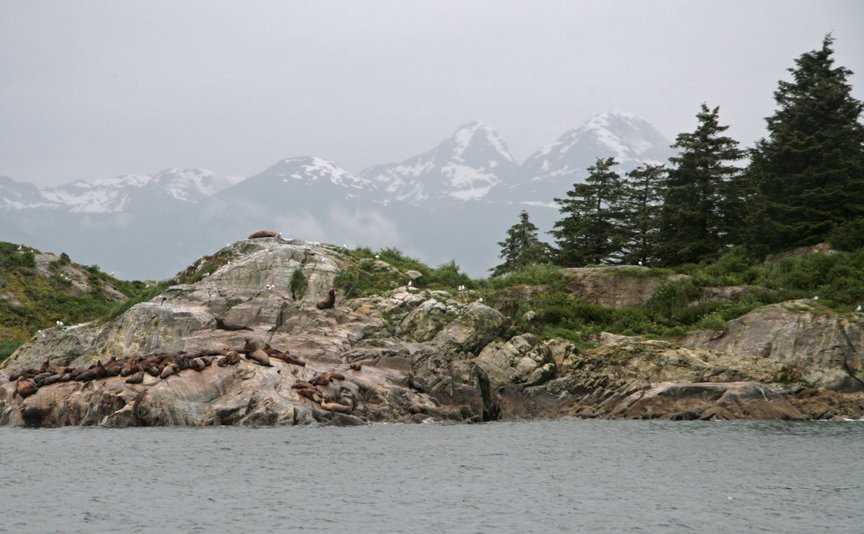Two-hundred and fifty years ago deep ice filled Glacier Bay, and covered all of the land except for the high mountain peaks. Then the ice receded in the fastest glacial retreat ever recorded. The newly exposed land is being re-colonized by plants and animals, and marine life is returning to the waters.
Our first stop today was at South Marble Island. Steller sea lions rested on low rocks, and we listened to their low roars and grumbles. Adorable tufted puffins with bright orange bills bobbed on the water’s surface. Black and white common murres stood in tight row on a narrow rock ledge. When an eagle flew close to the cliff-side kittiwake colony, they all scattered in flight and vocalized.
Gloomy Knob was true to its name, shrouded in mist. We watched a mountain goat nanny with a very tiny kid, probably just days old. We delighted in watching the young animal nurse, then bounce repeatedly into the air. As we gazed up at mountain goats, a humpback whale swam past.
By early afternoon we were at the north end of Tarr Inlet, and there was a striking contrast between white Margerie Glacier, and Grand Pacific Glacier, which is nearly black. Bits of ice crumbled from Margerie’s face, then enormous chunks calved into the water. A sea otter swam between bits of ice in front of the glacier. As we made our way south back down the bay, we had dramatic views of Johns Hopkins, Lamplugh and Reid glaciers.
After dinner we docked at Bartlett Cove, and walked in the mossy young spruce forest. Birds were singing, and there was a lovely fragrance of flowers ashore.







